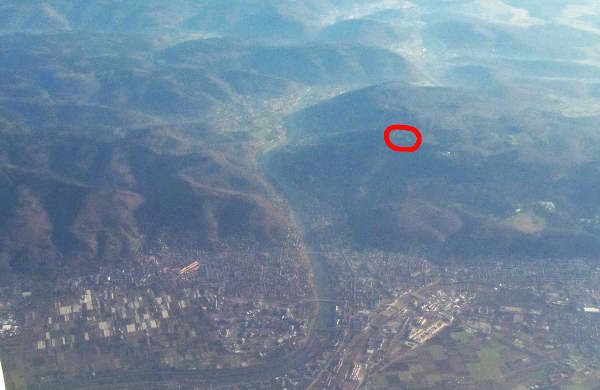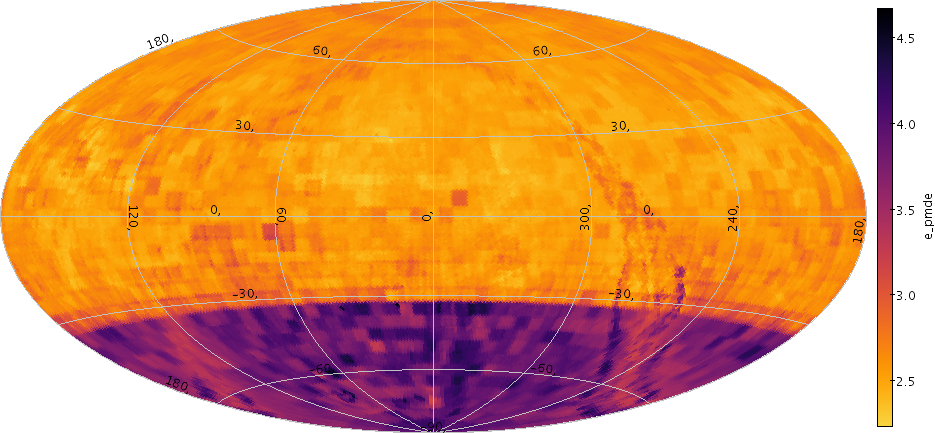2017-03-14
Markus Demleitner
A new arrival in the GAVO Data Center is UCAC5, another example of
a slew of new catalogs combining pre-existing astrometry with Gaia DR1,
just like the HSOY catalog
we've featured here a couple of weeks back.
That's a nice opportunity to show how to use ADQL's JOIN operator for
something else than the well-known CONTAINS-type crossmatch. Since both
UCAC5 and HSOY reference Gaia DR1, both have, for each object, a notion
which element of the Gaia source catalog they correspond to. For HSOY,
that's the gaia_id column, in UCAC5, it's just source_id. Hence,
to compare results from both efforts, all you have to do is to join on
source_id=gaia_id (you can save yourself the explicit table
references here because the column names are unique to each table.
So, if you want to compare proper motions, all you need to do is to
point your favourite TAP client's interface to http://dc.g-vo.org/tap
and run:
SELECT
in_unit(avg(uc.pmra-hsoy.pmra), 'mas/yr') AS pmradiff,
in_unit(avg(uc.pmde-hsoy.pmde), 'mas/yr') AS pmdediff,
count(*) as n,
ivo_healpix_index (6, raj2000, dej2000) AS hpx
FROM hsoy.main AS hsoy
JOIN ucac5.main as uc
ON (uc.source_id=hsoy.gaia_id)
WHERE comp IS NULL -- hsoy junk filter
AND clone IS NULL -- again, hsoy junk filter
GROUP BY hpx
(see Taylor et al's All of the Sky if you're
unsure what do make of the healpix/GROUP BY magic).
Of course, the fact that both tables are in the same service helps, but
with a bit of upload magic you could do about the same analysis across
TAP services.
Just so there's a colourful image in this post, too, here's what this
query shows for the differences in proper motion in RA:
(equatorial coordinates, and the aux axis is a bit cropped here; try for
yourself to see how things look for PM in declination or when plotted in
galactic coordinates).
What does this image mean? Well, it means that probably both UCAC5 and
HSOY would still putt kinks into the sky if you wait long enough.
In the brightest and darkest points, if you waited 250 years, the
coordinate system induced by each catalog on the sky would be off by 1
arcsec with respect to the other (on a sphere, that means there's kinks
somewhere). It may seem amazing that there's agreement to at least this
level between the two catalogs – mind you, 1 arcsec is still more than
100 times smaller than you could see by eye; you'd have to go back to
the Mesolithic age to have the slightest chance of spotting the
disagreement without serious optical aids. But when Gaia DR2 will come
around (hopefully around April 2018), our sky will be more stable even
than that.
Of course, both UCAC5 and HSOY are, indirectly, standing on the
shoulders of the same giant, namely Hipparcos and Tycho, so the
agreement may be less surprising, and we strongly suspect that a similar
image will look a whole lot less pleasant when Gaia has straightened out
the sky, in particular towards weaker stars.
But still: do you want to bet if UCAC5 or HSOY will turn out to be
closer to a non-kinking sky? Let us know. Qualifications („For bright
stars...”) are allowed.


![[RSS]](../theme/image/rss.png)
